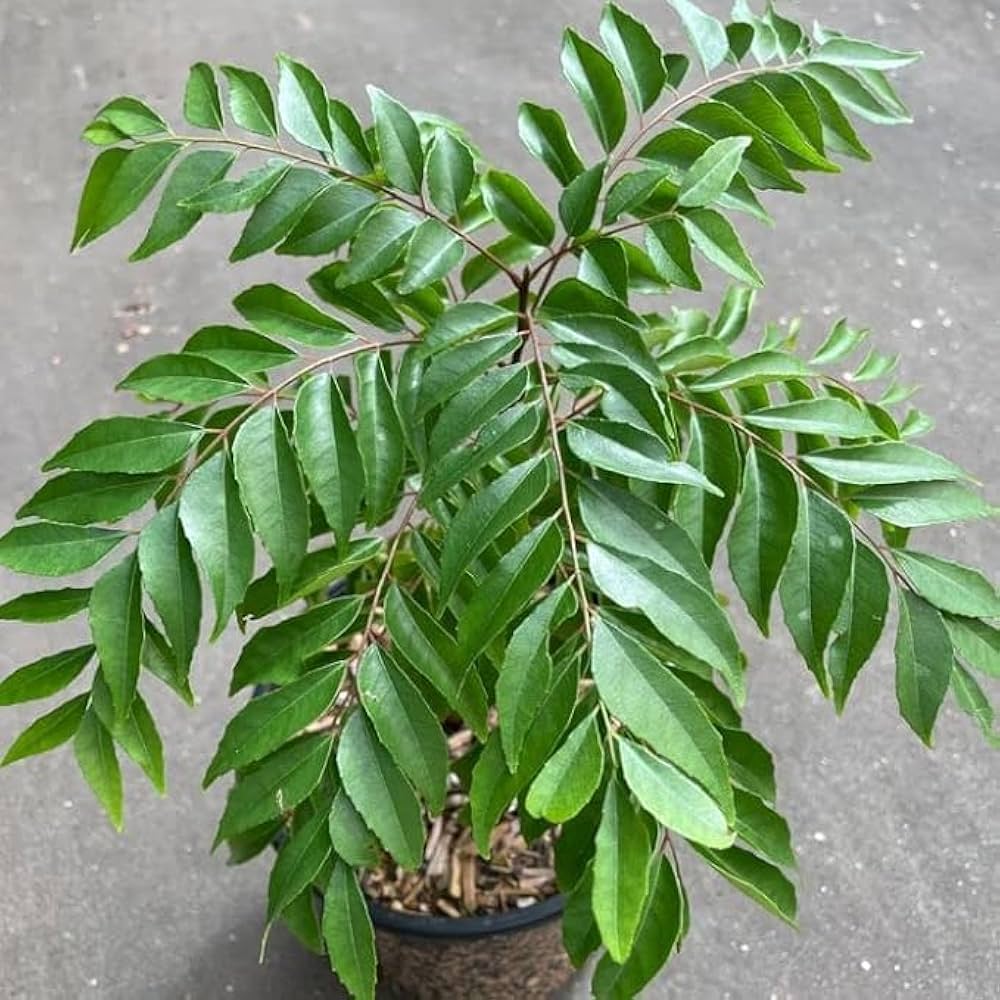Welcome to your holistic living

Botanical Name: Murraya koenigii
Family: Rutaceae
English Name: Curry leaves
Malayalam Name: Kariveppila
Hindi Name: Karipatta
Curry leaves are aromatic, teardrop-shaped leaves from the Murraya koenigii tree, native to India, with a distinct citrus and lemongrass-like flavor. They are a staple in South Indian cuisine, used fresh or dried to flavor curries, rice, and dals, and are also valued in Ayurvedic medicine for their health benefits and plant compounds like alkaloids and antioxidants. Unlike curry powder, they are a distinct leaf herb with a unique, pungent taste and are often added to hot oil for tempering. Habit: a wild, perennial, erect herb. Stem: herbaceous but woody below, erect, branched, cylindrical, solid, angular, hairy, longitudinally striated, nodes and internodes are prominent, green but violet or pink at nodes. Leaves: ramal and cauline, simple, exstipulate, opposite decussate, petiolate, ovate or obovate, entire, acute or acuminate, hairy all over, unicostate reticulate. Inflorescence: a spike with reflexed flowers arranged on long peduncle. Flowers: bracteate, bracteolate, bracteoles two, shorter than perianth, dry, membranous and persistent, sessile, complete, hermaphrodite, actinomorphic, pentamerous, hypogynous, small, spinescent, green. Bracts: ovate, persistent, awned. Perianth: made up of 5 tepals, polyphyllous, imbricate or quincuncial, green, ovate to oblong, persistent. Androecium: made up of 10 stamens, out of which 5 are fertile and 5 are scale-like, fimbriated, sterile staminodes, both alternating with each other, fertile stamens are antiphyllous, monadelphous, filaments slightly fused at the base, dithecous, dorsifixed or versatile, introrse. Gynoecium: it is bicarpellary, syncarpous, superior, unilocular, ovule one, basal placentation, style single and filiform, stigma capitate. Fruits: oblong utricle Seeds: endospermic with curved embryo, 2 mm long, oblong black. Flowering and Fruiting time: September to April
Leaves, roots, bark, fruit
1. Improves Digestion:Curry leaves are carminative and laxative, helping to relieve issues like indigestion, bloating, and constipation. 2. Stimulates Digestive Enzymes:They can enhance the activity of digestive enzymes, leading to better nutrient absorption. 3. Promotes Hair Growth:The leaves are rich in proteins and beta-carotene, which nourish hair follicles and strengthen hair. 4. Prevents Graying:Antioxidants in curry leaves help prevent premature graying and hair thinning. 5. Supports Skin Health:Anti-inflammatory and antimicrobial properties can help with skin infections, healing, and maintaining natural skin pigmentation.
Antioxidant, Antiinflammatory, Antidiabetic, anticancer
Rasa: Tikta, Kashaya
Guna: Laghu, Ruksha
Virya: Usna
Vipaka: Katu
Dosha Karma: Balances kapha and vata